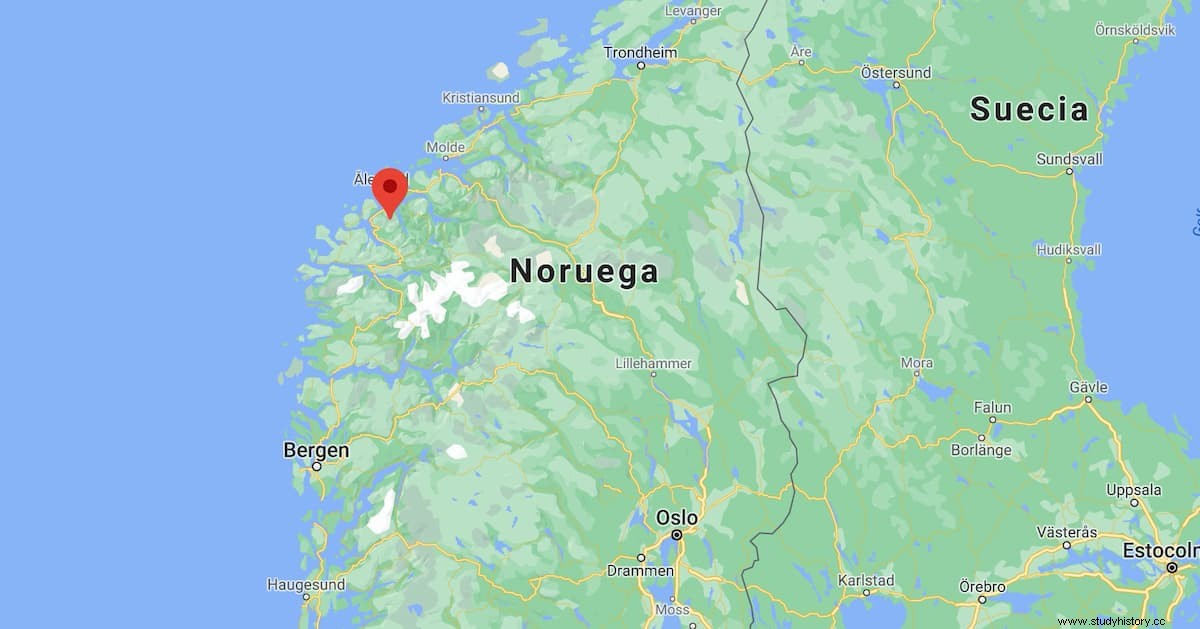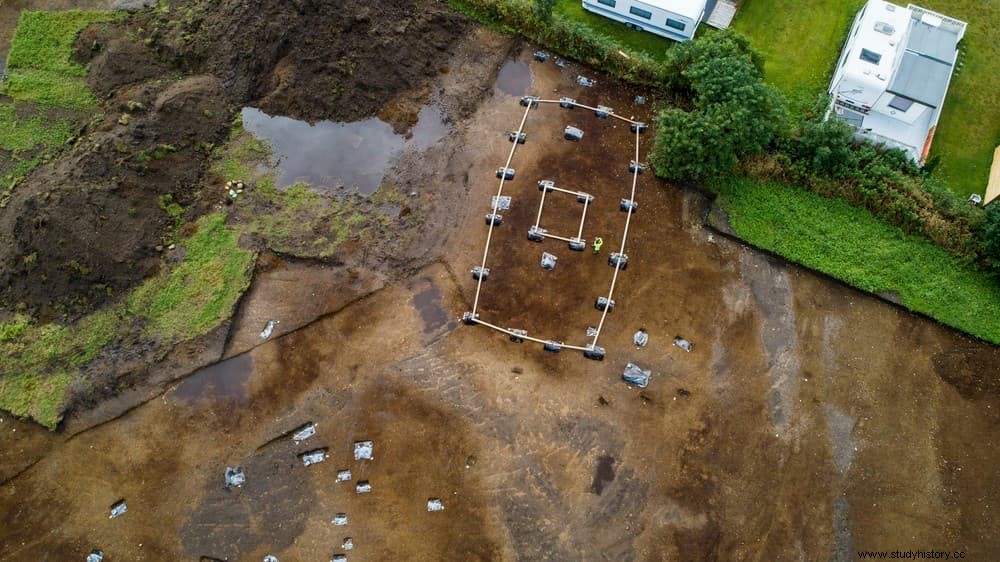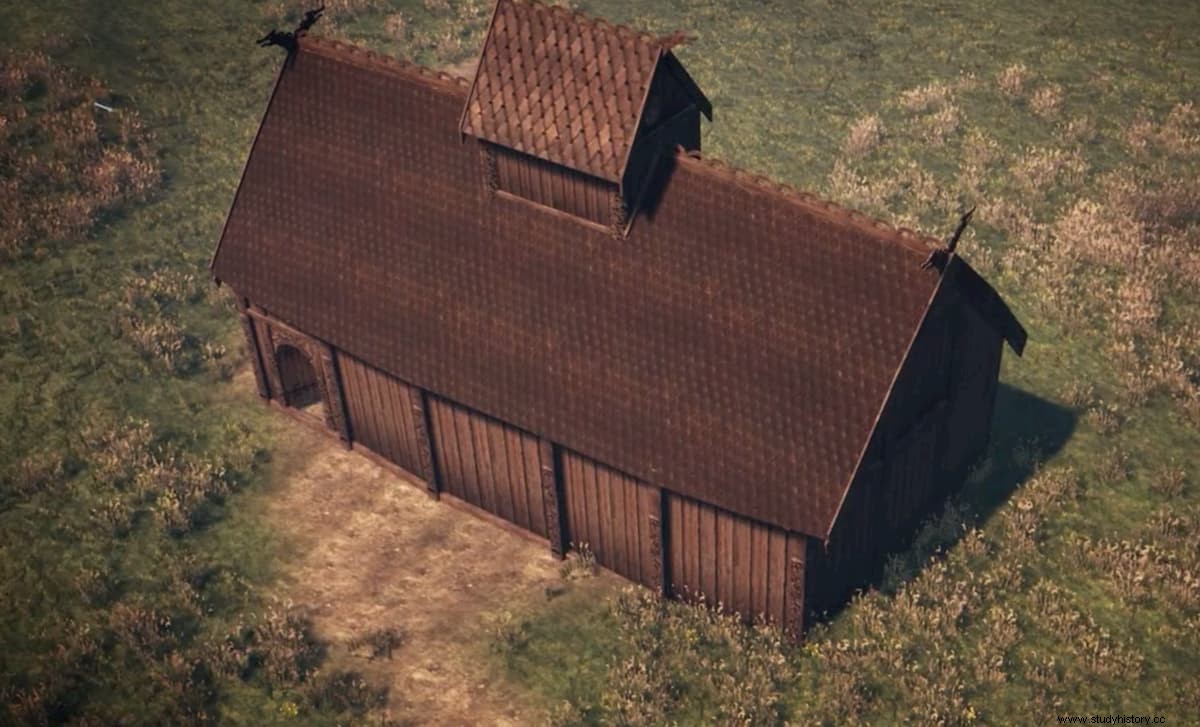Archaeologists from the Bergen University Museum excavating the Ose farm in the municipality of Ørsta, south of the country's northwest coast, have found the remains of a pagan temple from the Viking Age. According to the museum itself it is the first time that a structure of this type has been found in Norway , since most Viking temples found so far are in Sweden or Denmark.

In the excavated area, which is about 8,000 square meters, several buildings from periods ranging from the Iron Age to medieval times appeared. In the western part of the excavation, the remains of the temple were found, a structure that is 14 meters long by 7 meters wide.
Inside there are traces of holes, about 80 centimeters on each side, which would house 4 rectangular posts that would have supported a square tower of 3 by 3.5 meters, located in the center of the building. This interior structure is the key to identify the building as a Norse temple dedicated to the worship of gods such as Odin and Tor.

The structure was probably about 10 meters high, and overall smaller than other Norse temples found so far. Still, the find is unique in the Norwegian context, according to the archaeologists.
The first analyzes indicate that the temple was built around the year 575 AD, corresponding to the Viking Age. According to the archaeologist Søren Diinhoff it is an almost identical copy of the temples we know in southern Scandinavia, such as those at Uppåkra in Sweden and Tissø in Denmark .

According to Diinhoff these temples were used during religious festivals at the winter and summer solstices, where ritual banquets were held and sacrifices were offered to the gods. Those that have been found so far are associated with the settlements of great chiefs, but Diinhoff assures that this is not the case in Ørsta, where the remains appeared near the shore at the bottom of a fjord.
